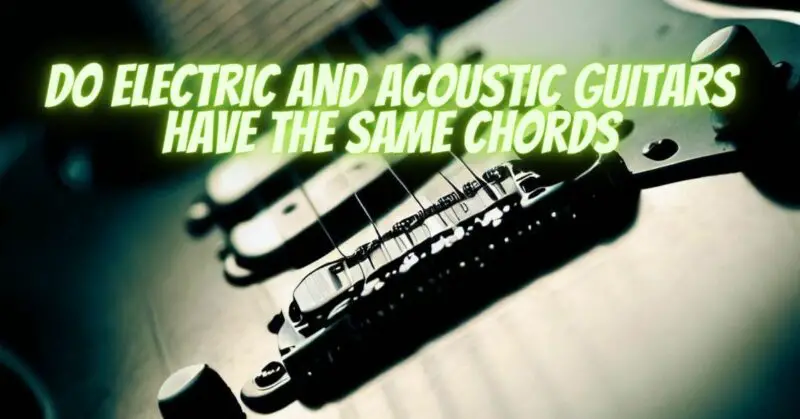The guitar is a versatile instrument that comes in various shapes and sizes, each serving different musical genres and playing styles. Electric and acoustic guitars are two popular types, each with its unique tonal characteristics and construction. One common question that arises among aspiring guitarists is whether electric and acoustic guitars have the same chords. In this article, we will explore the relationship between electric and acoustic guitar chords and shed light on the similarities and differences between these two beloved instruments.
- Understanding Chord Structures
Chords are groups of notes played simultaneously to create harmony in music. Guitarists use chord shapes and finger placements to produce specific chord sounds. The fundamental chord structures are the same for both electric and acoustic guitars, as they follow the standard music theory principles.
- Shared Chord Shapes
Electric and acoustic guitars share the same chord shapes, meaning the finger placements on the fretboard are identical. For example, an open C major chord on an acoustic guitar is played the same way on an electric guitar. Basic open chords such as C, D, E, G, A, and F, among others, are consistent between the two guitar types.
- Differences in Sound
While the chord shapes are the same, the sound produced by electric and acoustic guitars can vary significantly. Acoustic guitars generate sound acoustically, projecting the vibrations of the strings through the hollow body, resulting in a warm and natural resonance. On the other hand, electric guitars rely on pickups and amplifiers to produce sound, offering more tonal options, including clean, distorted, and effects-laden tones.
- Chord Progressions and Playing Styles
Chord progressions and playing styles may differ between electric and acoustic guitar music. Acoustic guitarists often favor fingerpicking and strumming techniques that suit folk, country, and singer-songwriter styles. Electric guitarists may explore power chords, arpeggios, and intricate soloing for rock, blues, jazz, and metal genres.
- Adapting Chords for Both Guitars
While the basic chord shapes are the same, there might be instances where you need to adapt chords for specific playing situations. For example, if an acoustic song uses a complex chord voicing that requires open strings, you may need to adjust the chord shape slightly for the electric guitar to avoid unwanted string muting.
- The Guitarist’s Technique and Expression
Ultimately, the chords are just a foundation, and the guitarist’s technique and expression define the character of the music. Whether playing an electric or acoustic guitar, each instrument offers a world of possibilities for the guitarist to explore and express their creativity.
In conclusion, electric and acoustic guitars share the same chord shapes, making the fundamental chord structures identical. The main differences lie in the sound production, tonal capabilities, and playing styles associated with each guitar type. While the chord shapes remain consistent, electric and acoustic guitars offer distinct tonal palettes, allowing guitarists to explore a vast range of musical genres and artistic expressions. Whether you’re strumming chords on an acoustic guitar by the campfire or shredding solos on an electric guitar in a rock concert, the guitar’s versatility and ability to convey emotion make it a beloved instrument for musicians of all backgrounds and styles.


